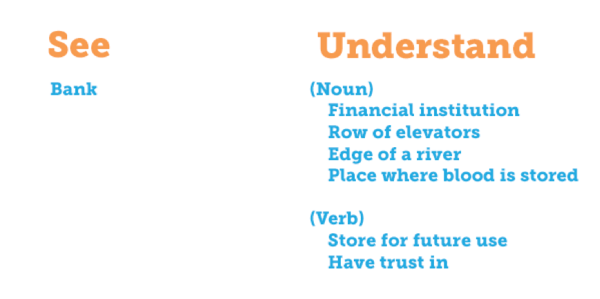
If you’ve ever worked on multiple writing projects that each require you to use a different voice, you probably know the importance of writing for the correct audience (and if you haven’t, don’t worry—it’s pretty simple to learn!). But what happens if you’re not sure who will be reading your content? Take a look at four ways to create content that’s appropriate for any audience!
1) Write at an 8th Grade Reading Level
If you’re writing for a business, chances are your audience is NOT a group of eighth graders. However, studies show that 50% of Americans read at an eighth grade level, and approximately only 13% read at a 12th grade level.
Shane Snow used the Flesch-Kincaid readability test to examine the work of a wide array of bestselling authors—and guess what? A surprising number ranked below a ninth grade level. This doesn’t mean their writing is low quality or that it’s not comprehensive enough to tell a good story. Instead, it just means they know how to keep it simple.
Even if your audience is highly educated and capable of reading at advanced levels, this doesn’t mean they want to spend extra time poring over unnecessary prose. Instead of making them sift through difficult-to-interpret text, why not speed up the process? After all, most readers want a quick answer to their questions, so let them search for a solution, help them solve their problem, and send them on their way!
Not sure how to do this? Keep reading, and I’ll explain everything. If you’re curious how your writing stacks up, run it through a readability test! (Full disclosure: this article ranked at a ninth grade level.)

2) Cut Down on Complex Words
Big words don’t equal great writing. Sure, using phrases that sound sophisticated may give your writing an intelligent edge, but that doesn’t mean your readers will understand what you’re saying. When it comes to creating easy-to-digest material, shorter is usually better.
Wondering how to trim your writing? Try simplifying your word choice. For example, change
- “Commence” to “start”
- “Numerous” to “many”
- “Similar to” to “like”
This will make it easier for people to read your content and find the information they’re searching for.
Sometimes words like these are known as “stop words” because they take longer to understand and can actually stop your reading. Even more complex are words that have multiple meanings. Take a look at an example from this handy Moz article:

The word “bank” can be a noun or a verb, and both forms can mean more than one thing! If you don’t provide the right context—or if you use a more complicated, hard-to-understand word—your reader’s comprehension could be interrupted, and they may lose interest in what you have to say.
3) Use Coherence Markers
Trying to explain a new concept? Want to make sure it’s clear to your readers? If you’re having a hard time figuring out how to do this, then make sure you’re using coherence markers! These are words that direct the reader, keeping them on track and making it easier for them to understand your ideas. But how do you use them? Take a look at the beginning of my last sentence. Words like “but” or “so” or “because” add clarity to your writing since they give readers a clear indication of your direction.
A commonly shared example of this is two versions of an advertisement for Dove’s Soft-Touch products.
Here’s the first version:
Your skin’s natural oils keep it silky and supple. As you age, it becomes less elastic and the production of oil slows down. Aging can cause dull, dehydrated skin. It’s essential to replenish the lost moisture with a natural, soothing alternative. Dove leaves your body clean and smooth. It contains ten times more natural oil than regular shower gels.
And here’s the second:
Your skin’s natural oils keep it silky and supple. But as you age, your skin becomes less elastic and the production of oil slows down. That is why aging can cause dull, dehydrated skin. So it’s essential to replenish the lost moisture with a natural, soothing alternative. Dove leaves your body clean and smooth, because Dove contains ten times more natural oil than regular shower gels.
So, which one do you think has more of an impact? The second example does a better job of guiding you through the text—and this type of writing has also been known to increase persuasion!
4) Use Images to Support Your Text
Yes, words are important. And yes, they’ll play a crucial role in providing a complete explanation of your ideas to your readers. But don’t forget the power of a picture! They say a picture is worth 1,000 words; in reality, it’s worth a whole lot more. The human brain actually processes images in about 100 milliseconds—compared to the nearly 10 seconds it takes to process text and decide whether it’s valuable.

Source: HubSpot
If that’s not convincing enough, think about this: when people hear something, three days later, they’ll only retain 10% of the information; however, when the details are combined with a relevant image, people retain a whopping 65% of the info after the same amount of time. So don’t be afraid to throw in a graph or chart to help get your point across! (Plus, when you add alt text to an image, it helps Google better understand your page.)
Creating content can seem like a challenging part of your website redesign process, but it doesn’t have to be! If you need help writing text that speaks to your audience—or any audience, for that matter—contact the Blue Frog Marketing team! We’re ready to be the creative solution to your writing needs.



